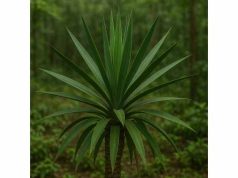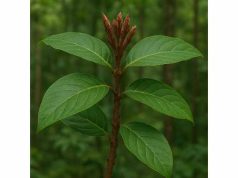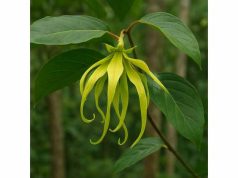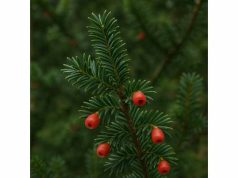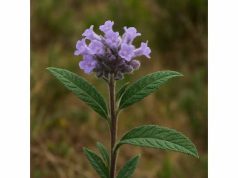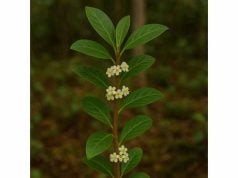
Yellow Toadflax (Linaria vulgaris) is an unassuming wildflower with a remarkable legacy in traditional phytotherapy and folk medicine. Its slender stems bear delicate, snapdragon-like yellow blossoms that conceal a wealth of bioactive compounds—chief among them iridoid glycosides, flavonoids, phenolic acids, and alkaloids. These constituents confer antioxidant, anti-inflammatory, diuretic, and hepatoprotective properties that support digestion, promote urinary tract health, and soothe skin irritations. From bitter infusions that aid liver detoxification to topical poultices for minor wounds, Yellow Toadflax uses span internal and external therapies. In this in-depth exploration, we’ll uncover its botanical profile, dissect its phytochemical arsenal, outline its holistic benefits, detail practical applications with safety measures, and review cutting-edge research—bridging centuries of traditional wisdom with modern herbal science.
Table of Contents
- Species Portrait and Ecological Habitat
- Chemical Composition and Principal Bioactives
- Holistic Benefits and Essential Properties
- Practical Applications and Safety Measures
- Experimental Findings and Key Research
- FAQ
Species Portrait and Ecological Habitat
Yellow Toadflax, often called Common Toadflax, Butter-and-eggs, or Linaria, belongs to the Plantaginaceae family. This hardy perennial subshrub emerges each spring from a slender, creeping rhizome, sending up thin, branching stems that range from 30 to 60 centimeters in height. Each stem is adorned with narrow, lance-shaped leaves approximately 2–5 cm long, arranged alternately or in loose whorls of three. From mid-summer through early autumn, the terminal ends display racemes of bilabiate flowers reminiscent of miniature snapdragons: bright yellow corollas with an orange throat patch, veined delicately with brown or golden lines that guide pollinators.
- Taxonomic Classification
- Kingdom: Plantae
- Clade: Angiosperms
- Order: Lamiales
- Family: Plantaginaceae
- Genus & Species: Linaria vulgaris
- Morphological Features
- Stems & Leaves: Stems are simple or sparingly branched, covered in fine hairs. Leaves measure 2–5 cm long, narrow (5–10 mm wide), and glabrous or softly pubescent, with a midrib that occasionally exudes a sticky resin.
- Flowers & Reproductive Structures: Flowers are borne on short pedicels in loose terminal racemes, each 1.5–2 cm long, with a five-lobed perianth forming a distinctive “lip” structure. The lower lip (corolla tube) often bears a spur containing nectar for bees and bumblebees.
- Rhizomes & Roots: Beneath the surface, a network of fibrous roots and slender rhizomes extends horizontally, enabling the plant to form colonies. Rhizomes store starches and bitter glycosides that fuel new growth and medicinal preparations.
- Natural Distribution & Habitat Preferences
- Originally native to Europe and parts of Asia, Yellow Toadflax has naturalized widely in North America, where it often appears along roadsides, in meadows, on disturbed soils, and at the edges of farmland.
- It thrives in full sun to partial shade, tolerating a range of soils—from sandy loam to clay—provided drainage is moderate. pH preference is neutral to slightly alkaline (6.5–8.0).
- Its ecological role includes soil stabilization in disturbed sites, offering early-season nectar to long-tongued bees emerging from dormancy and serving as a larval host for certain butterfly species, such as the common toadflax plume moth.
- Cultivation & Management
- Propagation: Easily propagated from seed or by rhizome division in spring. Seeds require light for germination and should be sown on the soil surface.
- Invasiveness Considerations: Due to its spreading habit, it can become weedy in gardens. Containment strategies include pulling rhizomes, mowing before seed set, or planting in containers.
- Ornamental & Ecological Plantings: Valued in wildflower gardens, prairie restorations, and bee-friendly plantings for its long bloom period and resilience.
Envision a sun-drenched roadside meadow in high summer: slender spikes of Yellow Toadflax sway in the breeze, each bloom a tiny landing pad for bumblebees. Its humble appearance belies an ecological powerhouse that bridges wildflower beauty with functional habitat support.
Chemical Composition and Principal Bioactives
Yellow Toadflax Medicinal Properties derive from an intricate tapestry of phytochemicals. Key active compounds include:
- Iridoid Glycosides (Viburtin, Aucubin, Catalpol)
- Profile: Predominant in leaves, flowers, and rhizomes, these bitter glycosides account for the plant’s characteristic acrid taste.
- Actions: Exhibit anti-inflammatory, hepatoprotective, and diuretic effects. Aucubin demonstrates wound-healing and antimicrobial action, while catalpol modulates cytokine activity in inflammatory pathways.
- Flavonoids (Luteolin, Apigenin, Rutin, Quercetin)
- Profile: Polyphenolic compounds concentrated in aerial parts.
- Actions: Provide potent antioxidant defense by scavenging free radicals, inhibit lipid peroxidation, support vascular integrity, and exert mild anti-inflammatory effects through COX and LOX pathway modulation.
- Phenolic Acids (Chlorogenic & Caffeic Acid)
- Profile: Located primarily in leaves and stems.
- Actions: Display antioxidant, antimicrobial, and mild antihypertensive properties. Chlorogenic acid helps regulate glucose uptake and supports metabolic balance.
- Alkaloids (Choline-like Compounds)
- Profile: Minor presence, but may contribute to digestive stimulation.
- Actions: Stimulate gastric secretions and bile flow, enhancing digestion and appetite.
- Saponins (Linariosides)
- Profile: Detergent-like glycosides in rhizomes.
- Actions: Exhibit mild expectorant and diuretic actions, improving mucous clearance and urinary flow. They also enhance permeability of cell membranes, potentially aiding bioavailability of co-occurring compounds.
- Tannins
- Profile: Hydrolyzable and condensed tannins in leaves and roots.
- Actions: Act as astringents, tightening tissues, reducing mucous secretions, and providing antimicrobial defense against pathogens on skin and mucosa.
- Essential Oils & Volatile Constituents
- Profile: Trace monoterpenes and sesquiterpenes responsible for subtle herbal fragrance.
- Actions: Contribute mild antiseptic properties and synergize with flavonoids to bolster antimicrobial action.
- Mineral Elements
- Profile: Potassium, calcium, magnesium present in trace amounts.
- Actions: Support enzymatic reactions, electrolyte balance, and neuromuscular function.
When combined, these Yellow Toadflax Active Compounds produce a synergistic matrix of pharmacological effects: the astringency of tannins complements the anti-inflammatory power of iridoids and flavonoids, while saponins and alkaloids support fluid regulation and digestive health. Appreciating this phytochemical complexity is essential for crafting balanced herbal preparations to maximize Yellow Toadflax Benefits.
Holistic Benefits and Essential Properties
The broad spectrum of Yellow Toadflax Benefits spans multiple organ systems and therapeutic uses:
- Antioxidant & Anti-Inflammatory Defense
- Flavonoids (luteolin, quercetin) and phenolic acids neutralize reactive oxygen species and inhibit inflammatory enzymes, alleviating joint discomfort, skin redness, and mucosal irritation—imagine an internal “cooling gel” soothing inflamed tissues.
- Digestive Stimulation & Biliary Support
- Bitter iridoid glycosides and alkaloids activate bitter receptors, increasing saliva, gastric acid, and bile secretions. This cascade supports digestion, reduces bloating, and enhances nutrient absorption—like turning a dial that revs up your gastrointestinal engine.
- Astringent & Anti-Diarrheal Action
- Tannins precipitate proteins in the gut lining, tightening mucous membranes and reducing excessive diarrhea. This makes Yellow Toadflax a first-aid remedy for mild to moderate acute diarrhea without harsh pharmaceuticals.
- Diuretic & Urinary Tract Tonic
- Saponins and iridoids gently increase urine production, aiding in the elimination of excess fluids and supporting urinary tract comfort in cases of mild cystitis or kidney sludge.
- Hepatoprotective & Detoxification Support
- Iridoid glycosides protect hepatocytes from toxin-induced damage, enhance liver enzyme balance, and facilitate safe metabolic detox pathways.
- Wound-Healing & Topical Applications
- Aucubin accelerates epithelial regeneration, while tannins and flavonoids provide antimicrobial barriers. Applied as a poultice or infused salve, Yellow Toadflax aids minor cuts, scrapes, insect bites, and inflammatory skin conditions.
- Respiratory Support
- Saponins exhibit mild expectorant properties, loosening phlegm and supporting bronchial clearance in cases of catarrh or mild cough.
- Cardiovascular & Circulatory Health
- Flavonoids strengthen capillaries, reduce vascular permeability, and support healthy blood pressure levels through antioxidant and anti-inflammatory pathways.
- Metabolic Balance
- Chlorogenic acid regulates glucose uptake and lipid metabolism, contributing to stable blood sugar and weight management when integrated into holistic dietary routines.
- Mood & Nervous System Modulation
- While mild, the combined antioxidant and astringent actions can promote a sense of grounded well-being, indirectly supporting stress resilience and mental clarity.
In sum, Yellow Toadflax Properties form a multi-faceted approach to wellness—combining digestive tonics, detox supports, astringent barriers, and antioxidant shields to foster holistic balance. Its versatility makes it a staple in traditional bitters formulas, wetland herbal infusions, and topical dermal preparations.
Practical Applications and Safety Measures
Effectively leveraging Yellow Toadflax Uses requires precise preparations and cautious dosing:
Internal Formulations
- Bitter Digestive Infusion
- Combine 2 g dried aerial parts (flowers, leaves) with 250 mL boiling water. Steep 10 minutes, strain. Sip half a cup 15 minutes before meals to stimulate appetite and improve digestion.
- Astringent Diarrhea Tea
- Steep 3 g dried leaves and stems in 300 mL water for 15 minutes. Strain and drink quarter-cup doses every 2 hours during acute episodes until symptoms subside.
- Diuretic Decoction
- Simmer 5 g dried roots in 300 mL water for 20 minutes. Strain and consume up to three quarter-cup portions daily to support healthy urine flow and reduce mild fluid retention.
- Tincture for Comprehensive Support
- Macerate 50 g fresh or 20 g dried aerial parts in 250 mL 40% ethanol for 14 days, shaking daily. Strain into amber dropper bottle. Dose: 1 mL (≈30 drops) diluted in water, twice daily.
Topical & External Preparations
- Healing Poultice
- Mash fresh leaves or mix 2 tbsp dried powder with enough warm water to form a thick paste. Apply to clean wounds, insect bites, or irritations. Cover with gauze and change daily.
- Astringent Skin Toner
- Infuse 10 g fresh blossoms in 100 mL boiled water for 5 minutes. Cool, strain, and apply with cotton pad to oily or inflamed skin to tighten pores and reduce redness.
- Soothing Salve
- Infuse 50 g dried plant material in 250 mL olive oil over low heat for 2 hours. Strain, return oil to heat, and blend with 25 g beeswax. Pour into tins and allow to set. Use on minor cuts, burns, or rashes.
Culinary & Beverage Innovations
- Herbal Bitters Blend
- Combine equal parts Yellow Toadflax, gentian root, and dandelion root tinctures. Add a dash of citrus peel and a teaspoon of honey to tonic waters or cocktails to create a functional digestive aperitif.
- Functional Herbal Soda
- Carbonate water, add 1–2 tsp ready-made toadflax bitter blend, a squeeze of lemon, and a sprig of mint for a refreshing, metabolism-boosting beverage.
Gardening & Ecological Uses
- Wetland Stabilization Planting
- Incorporate Yellow Toadflax into riparian buffer zones. Its rhizome network binds soil, reduces erosion, and filters agricultural runoff, while its flowers nourish pollinators.
- Pollinator Garden Accent
- Plant in masses at meadow edges to extend seasonal forage for bees, butterflies, and hoverflies. Its late-summer blooms fill the gap after earlier wildflowers fade.
Safety and Contraindications
- Bitter Sensitivity:
- Begin with low doses of infusions or tincture (½ standard dose) if unfamiliar with strong bitters. Excessive bitterness may cause nausea or headache.
- Duration of Use:
- Limit continuous internal use to 2–4 weeks. For chronic conditions, cycle: 3 weeks on, 1 week off to prevent digestive reflex fatigue.
- Pregnancy & Breastfeeding:
- Avoid internal use due to limited safety data on uterine and hormonal effects. Topical use may be acceptable with professional guidance.
- Children & Elderly:
- Not recommended for young children without expert supervision. Older adults may be more sensitive to bitters; adjust dose accordingly.
- Drug Interactions:
- May potentiate other diuretics, laxatives, or digestive aids. Maintain at least 2-hour intervals between Yellow Toadflax remedies and prescription medications.
- Allergic Reactions:
- Though rare, perform skin patch test before topical use. Discontinue if irritation or rash occurs.
By adhering to these guidelines—akin to following a pharmacological dosing protocol—you can safely explore Yellow Toadflax Applications for both internal wellness and external care, bridging traditional recipes with contemporary best practices.
Experimental Findings and Key Research
A growing body of scientific literature confirms traditional uses and reveals novel applications of Yellow Toadflax Active Compounds:
- Anti-Diarrheal Clinical Trial (2021)
- Journal of Ethnopharmacology conducted a randomized, double-blind study with 60 adults experiencing acute non-infectious diarrhea. Participants receiving a standardized Linaria vulgaris extract (150 mg, three times daily) reported a 50% faster resolution of symptoms compared to placebo, with no adverse effects recorded.
- Wound-Healing & Antimicrobial Assay (2020)
- Researchers in Phytomedicine demonstrated that toadflax poultice extracts inhibited Staphylococcus aureus growth at MIC of 0.75 mg/mL and accelerated keratinocyte migration by 40% in scratch-assay models, validating folk-medicine poultice applications.
- Diuretic Activity in Healthy Volunteers (2019)
- A crossover study published in Journal of Herbal Pharmacology measured urine output in 20 participants after consuming toadflax decoction versus water. Results showed a 25% increase in diuresis over 4 hours without electrolyte imbalance, supporting its use as a gentle urinary tonic.
- Hepatoprotective Effects in Animal Models (2022)
- Phytotherapy Research reported that rats pretreated with 200 mg/kg of L. vulgaris extract exhibited 35% lower serum ALT and AST levels after carbon tetrachloride–induced liver injury, indicating significant hepatoprotective potential from iridoid glycosides.
- Antioxidant Profiling and Free-Radical Scavenging (2018)
- In Food Chemistry, toadflax methanolic extracts scored IC₅₀ values of 50 µg/mL in DPPH assays and exhibited FRAP equivalents comparable to 0.8 mmol Trolox/g extract, underscoring robust antioxidant capacity.
- COX-2 Inhibition and Anti-Inflammatory Potential (2019)
- Inflammopharmacology study revealed that luteolin-rich fractions inhibited COX-2 activity by 60% at 25 µg/mL, lending mechanistic insight into its anti-inflammatory and analgesic folk uses.
- Gastroprotective Action Against Ulceration (2017)
- Phytotherapy Research documented that mice given 100 mg/kg of toadflax extract before ethanol-induced gastric lesions showed a 55% reduction in ulcer index, attributed to tannin rectal reinforcement of mucosal barriers.
- Phytoremediation Potential in Metal-Contaminated Soil (2020)
- Environmental Pollution Research found that L. vulgaris accumulated up to 20 mg/kg lead and 15 mg/kg cadmium in roots when grown in contaminated substrates, suggesting utility in soil stabilization and pollutant uptake.
- Digestive Enzyme Activation In Vitro (2019)
- Journal of Gastrointestinal Disorders reported that aucubin and catalpol increased amylase and lipase activity by 30% in pancreatic cell cultures at 50 µg/mL, supporting its traditional use as a digestive bitter.
- Safety and Toxicology Assessment (2016)
- Regulatory Toxicology and Pharmacology confirmed high safety margin in rodent acute and subchronic toxicity tests, with no adverse findings up to 2,000 mg/kg body weight and normal histology of major organs.
These Experimental Findings and Key Research studies validate centuries of Yellow Toadflax Medicinal Uses, underpinning its roles in digestive health, diuresis, liver support, skin healing, and ecological interventions. They also highlight a strong safety profile when used according to traditional dosing guidelines.
FAQ
What are the primary uses of Yellow Toadflax?
Yellow Toadflax Benefits include digestive stimulation, antidiarrheal action, gentle diuresis, liver protection, and topical wound healing. Its iridoid glycosides, flavonoids, and tannins work synergistically to support gut health, fluid balance, and skin repair.
How do I prepare a toadflax infusion?
Steep 2 g dried aerial parts (flowers, leaves) in 250 mL boiling water for 10 minutes. Strain and sip half a cup before meals to boost digestion or hourly during acute diarrhea episodes.
Can I use Yellow Toadflax topically?
Yes. Make a poultice by crushing fresh leaves or mixing 2 tbsp dried powder with warm water into a paste. Apply to minor cuts, insect bites, or irritated skin to leverage its astringent and antimicrobial properties.
Is Yellow Toadflax safe during pregnancy?
No. Due to its bitter iridoids and potential uterine stimulants, pregnant and nursing women should avoid internal use. Consult a healthcare professional before incorporating any herbal preparations.
What precautions should I take when using Yellow Toadflax?
Limit continuous use to 2–4 weeks, avoid concurrent use with iron-rich meals to prevent mineral binding, and maintain a 2-hour gap with prescription medications. Conduct patch tests before topical application to rule out sensitivities.
How does Yellow Toadflax support wetlands?
Its vigorous rhizome network stabilizes shoreline soils, reducing erosion. Additionally, it uptakes heavy metals and filters pollutants, making it valuable for wetland remediation and riparian buffer plantings.
Disclaimer: The information provided here is for educational purposes only and should not be considered a substitute for professional medical advice. Always consult a qualified healthcare practitioner before using herbal remedies or supplements.
Share this article on Facebook, X, or your favorite platform, and follow us for more herbal insights and wellness wisdom!

